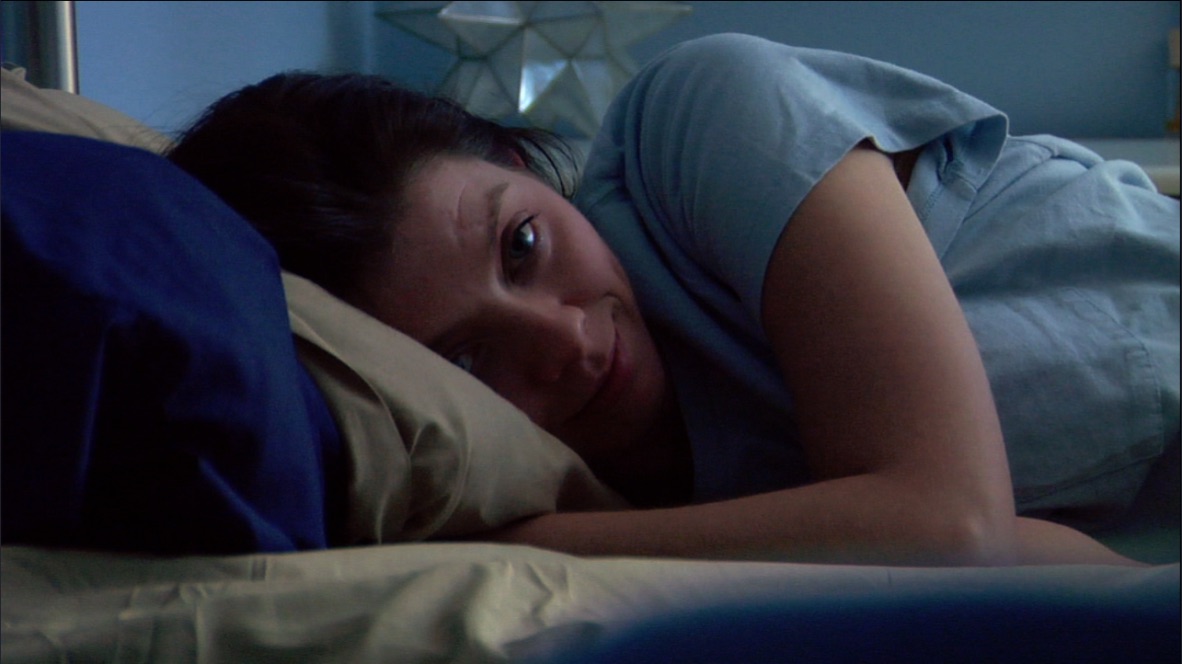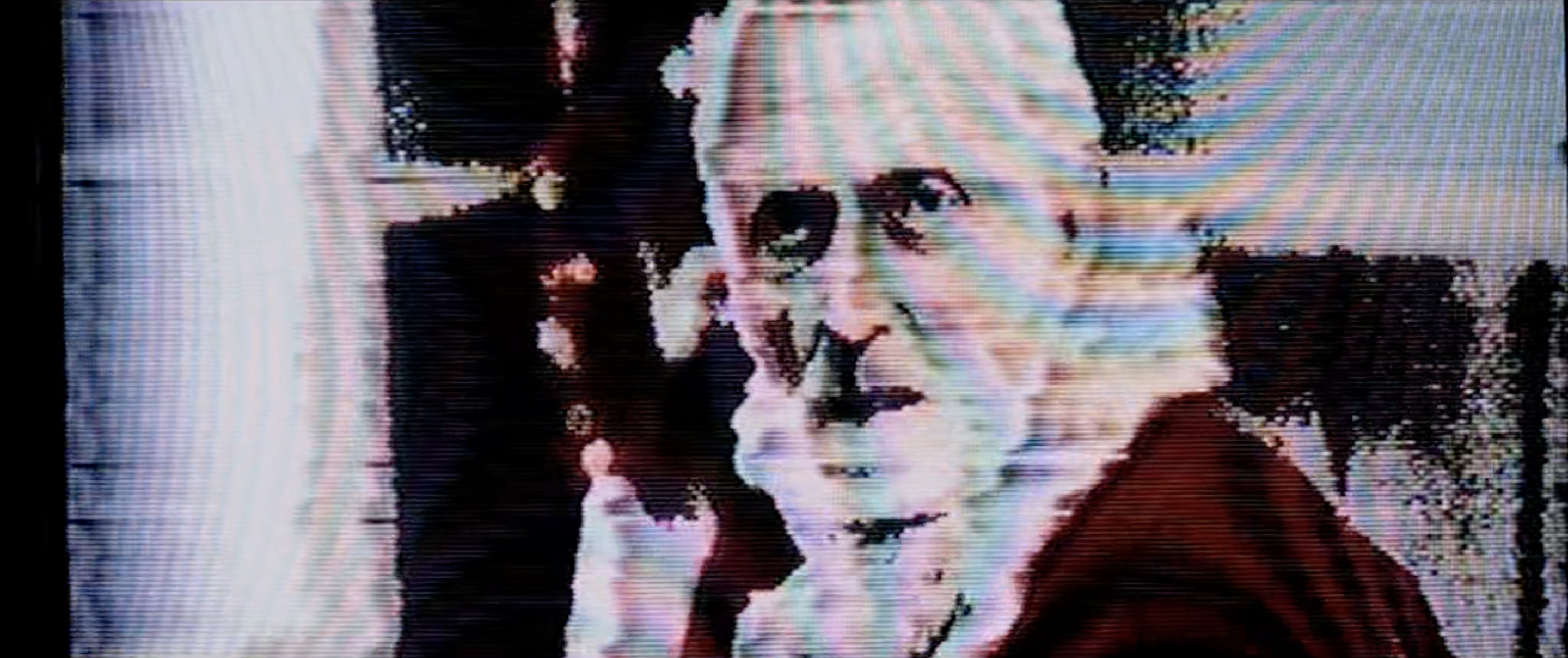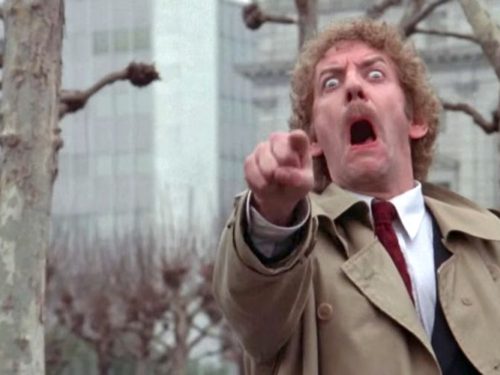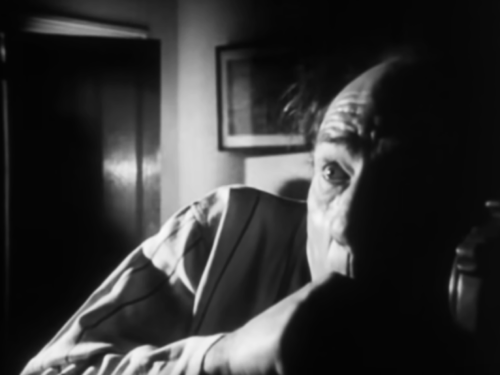Ross’ 2010 film makes an ideal entry point to his filmography as it questions why we live so unquestioningly
Frank V. Ross’ films have never fit soundly within the definition of “mumblecore.” His work has an edge that many of his contemporaries lack. While detractors have slighted the movement for its low-budget, low-stakes explorations of youthful ennui, Ross’ films are unique for their deep concern with the emotional and imaginative consequences that come with making a living. His working-class characters have a wide range of responsibilities, with most established in steady jobs and long-term relationships, while some have kids. In his films, individuals face compromise on a regular basis; his couples, far from the romance of post-collegiate young love, bicker and worry about making ends meet, situating Ross’ work more in line with Mike Leigh or Ramin Bahrani than with Lena Dunham. His characters are all stuck in their own personal grinds, and these grinds are approached as conflicts of consciousness. Few filmmakers — perhaps only Leigh, who is a major influence on Ross — are as keen at finding the drama in our everyday sweating of the small stuff. Through Ross’ films, we see how much time we spend worked up over our own little problems and how hard it can be to see beyond them to the bigger picture.
Hailing from the suburbs of Chicago, Ross has written, directed and edited six independent features since 2005. He has had premieres at South by Southwest and screenings in prestigious venues such as New York’s Museum of Modern Art and the Harvard Film Archive. Yet up until his most recent feature, Bloomin’ Mud Shuffle, which was released digitally by Factory 25 in 2017, his films have struggled to obtain professional distribution. This has led Ross and his films to become regulars in “Best Film Not Playing in a Theater Near You” award categories, and lists of “Best Undistributed Films.” Currently, the majority of his work is exclusively available through a subscription to Fandor on Amazon Prime and other services, or you can buy them on DVD from Ross himself with handwritten titles on a burned disc.
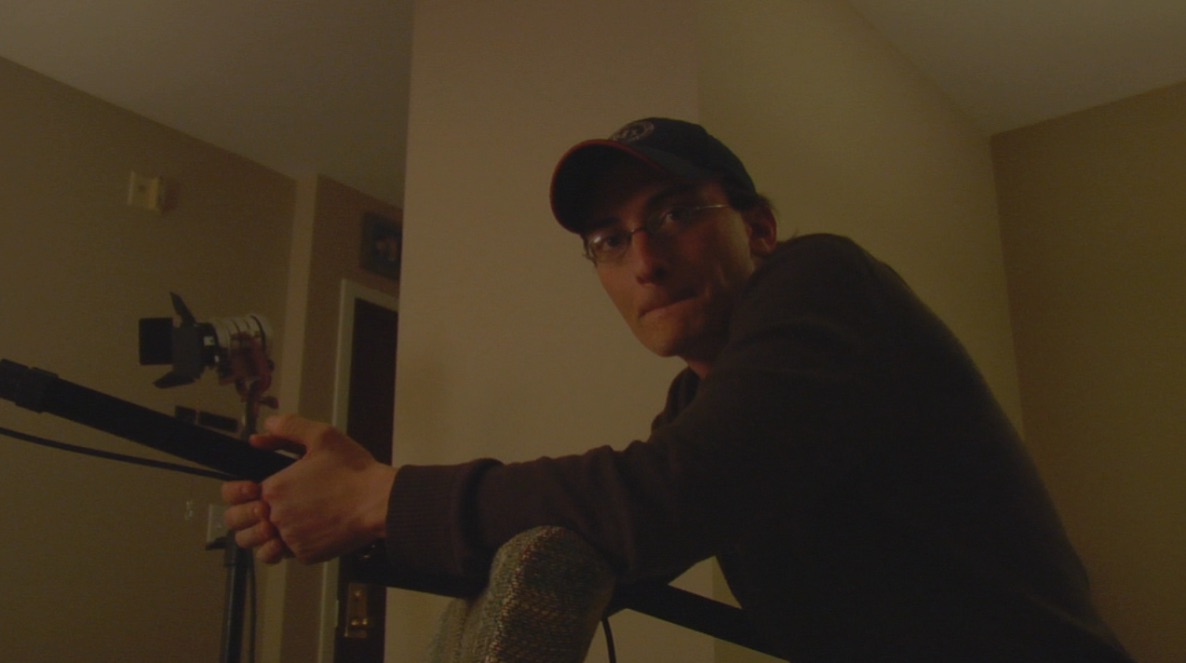
Audrey the Trainwreck (2010) is Ross’ fourth “official” film. (He directed two features before his breakthrough film, 2005’s Quietly on By, that he has willfully suppressed.) Its 10th anniversary is approaching, but it’s gone long enough without receiving the attention it deserves. Audrey is a mid-career triumph featuring a score by legendary jazz pianist John Medeski, and cinematography by David Lowery, director of A Ghost Story (2017) and The Old Man & the Gun (2018). It stands as the ideal introduction to Ross’ work, taking the freewheeling style developed in his early period to a new level of structural complexity, while hinting toward the restraint he continues to hone in his more melancholic contemporary work.
The film follows Ron Hogan (Anthony Baker) and Stacy Ryan (Alexi Wasser), two 30-something working-class Chicagoans who meet through an online dating service. Ron is an ATM-parts purchaser who hates his job, yet has allowed it to rule over his life through unquestioning acceptance. His only friends appear to be his work associates, whom he complains about for being so preoccupied with the distant dream of retirement. Nicknamed “Mr. Grumpy Pants” by his roommate Scott (Danny Rhodes), Ron tries to live by a strict daily routine, yet his attempts are often thwarted through a series of accidents and disruptions, feeding his perpetually sour mood. Stacy, on the other hand, is a delivery woman for a parcel service, who is also working to better her situation through night school. When they begin dating, they bond over a shared dissatisfaction with their present situations while occupying vastly different perspectives on how to approach the future.
Related: People in the Sun: Kelly Reichardt’s Meek’s Cutoff (2010) by Brett Wright
Upon its release, many critics described the film as a “slice-of-life” portrait of 9-to-5 blues. But to see it in such static terms, as just a movie about a grumpy guy who hates his job, is to miss the work that Ross is doing beyond the immediacy of the characters’ boredom. Where most mainstream films depict the working life as completely draining, tedious or oppressive (think of anything from Office Space to Fight Club, or any of Spielberg’s suburban escapist fantasies), Ross refuses to write the whole of his working characters’ lives off as insignificant. Far from the conventional, proactive triumphs of Hollywood’s working-class heroes who strive against oppressors and escape the averageness of their existence, Ross guides us through a process of subtilizing and retuning our perceptions to better recognize the impediments of such patterned ways of living. Ross’ films show us how his characters’ identities, and our own viewing habits, can become slaves of procedure.
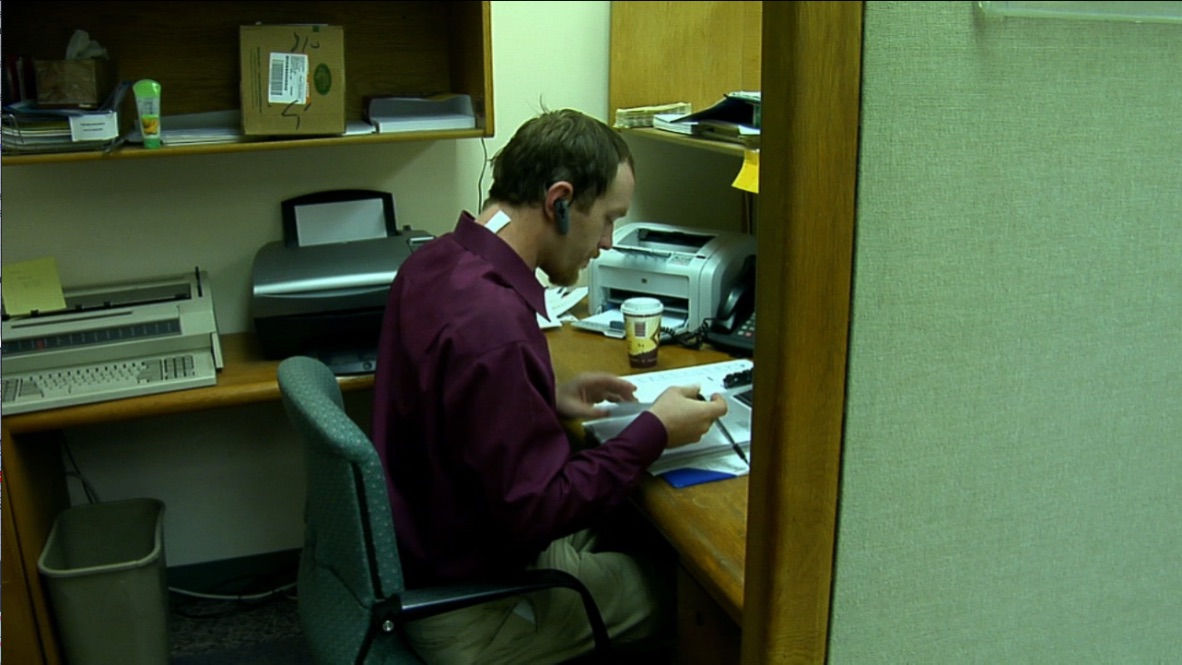
Ross’ work has a unique way of building a haphazardness about its surface while holding to a deeply rooted, often obscured, sense of structure. His editing is elliptical and the pacing is often swift. Scenes can be loaded with seemingly off-hand details, drawing our focus across rooms or over fences to catch something taking place at a distance from the primary action. His soundtracks will bury scenes in overlapping conversations, or with overpowering background noises, such as the whistles and engine sounds of passing commuter trains.
His style can be bewildering to a casual viewer, but Ross reinforces these stray moments through the contrasts they build within his scenes. While his films catch us up in the bustle of his characters’ lives, it is important to recognize that Ross creates most of his meaning beyond the awareness of his figures. The camera rarely lines up with any character’s point of view, situating us in a position to notice the blind spots in their perception. Similar in breadth to Robert Altman’s ant farm view over his characters, yet far from his cynical outlook, the distance Ross creates between viewers and characters expands the range of our own sensitivity within his scenes. Our attention is split between the immediacy of his characters’ actions, the edges of Ross’ frames and the layering of his soundtracks. These contrast points allow Ross to shift our perspective on a particular relationship, situating it within a wider, often more humbling context, or to pause within environments that his characters breeze through without a second thought. Ross complicates our sense of how these individuals interact with the environments that surround them.
Ron and Stacy are in a difficult spot in their lives. They are close in age to the married couple Ross would portray in his next film, Tiger Tail in Blue (2012), yet they are still single and beginning to harden into their various work and personal routines. There is a good deal of anxiety, frustration and loneliness in the film, and Ross’ style intensifies our sense of their tangled emotions. These characters are aware that their current and rather unfavorable situations could congeal into how they spend the rest of their lives.
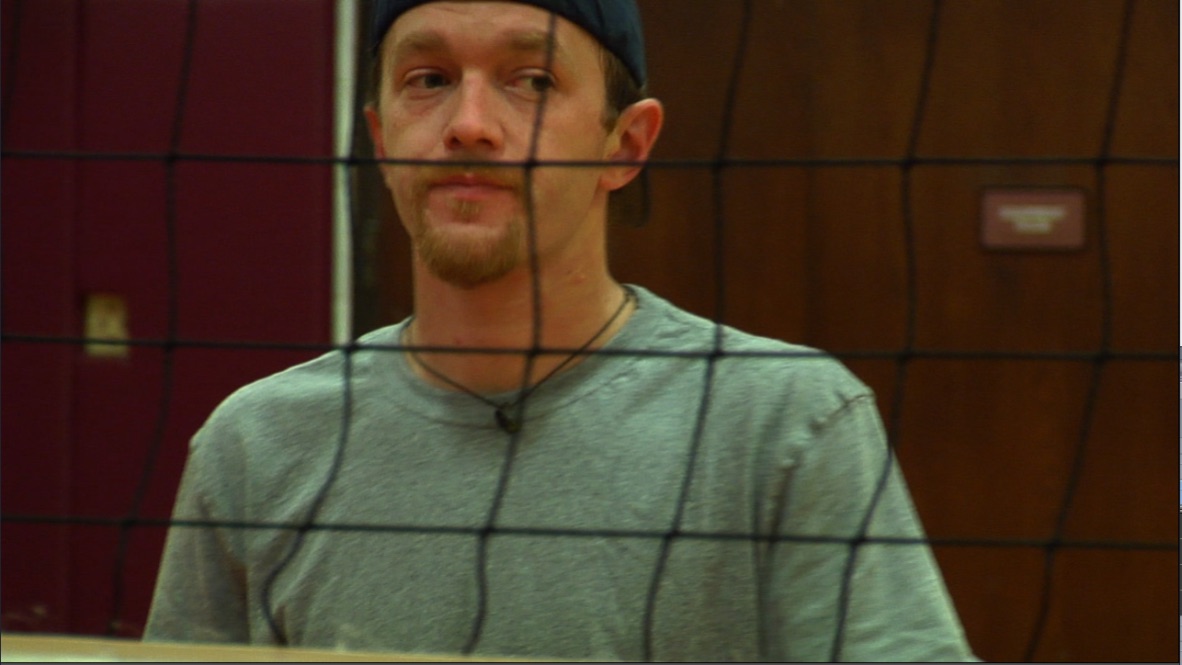
Audrey the Trainwreck confronts us with a certain blindness in our modern ways of living. It questions the way we live so unquestioningly, so apt to conform to, as Stacy says, the “easy ways” of life that the world seems to set for us through career paths and generally accepted norms of behavior. Audrey creates challenges for the audience, working against our own tendencies and desires to settle into the film. Ross urges us to move with a different kind of flow than the traditional orienting tactics of mainstream narratives. This is clear from the start, as the opening sequence presents a series of shifting styles and tones. Each scene builds toward potential typical “movie” action and abruptly ends. First, Ron is hit in the neck with a dart at a bar, and just as he and his friends reach crisis level, the film cuts away to his roommate Scott receiving Ron’s hospital phone call. In the waiting room, Ron meets a sincere yet medicated and bandaged woman, and the potential for a “meet-cute” romantic comedy arises — could this be the titular Audrey? — only for the woman to never appear in the film again. Scott speeds to the hospital to pick up his injured friend, but his tire blows on the way. The film uses these odd tonal shifts and deflections of conflict to guide us into the intricacies of minor, non-climactic moments. Ross keeps us on our toes, just as he does with his characters.
Often these shifts take place when a character looks about to slip too complacently into an unimaginative lifestyle. At one point, Ron admits to wishing he could just “get mad” and stay mad long enough to change something in his life. Ross creates these opportunities through a series of retaliations against his characters — sly disruptions designed to aid them in releasing such tensions.
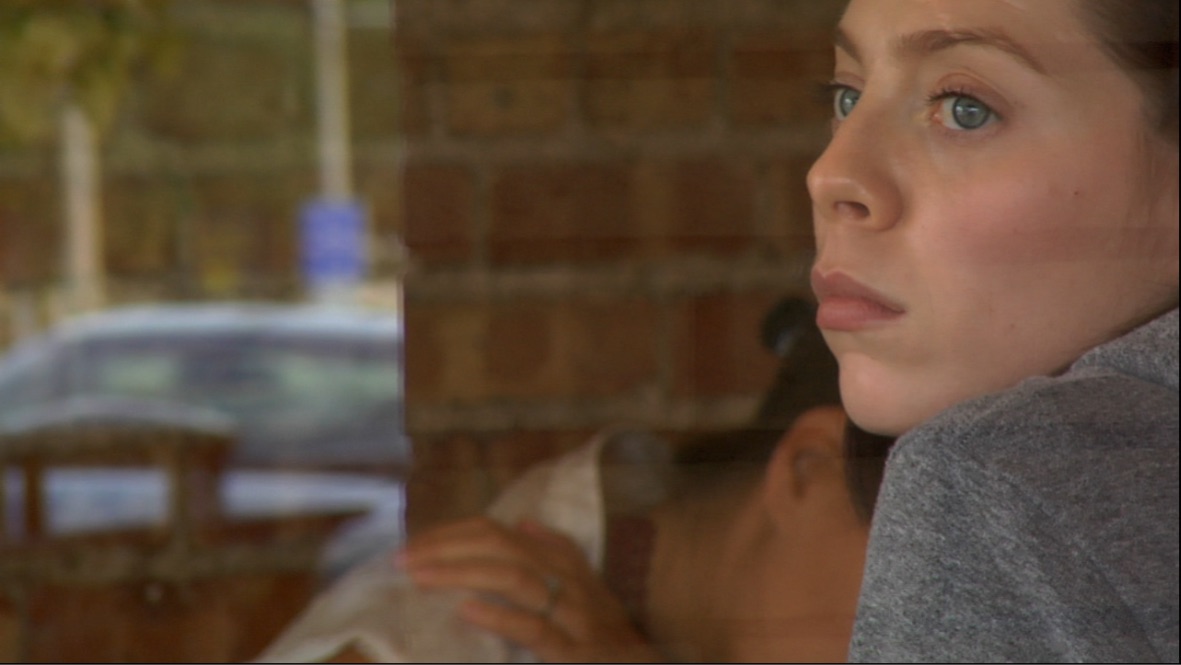
Of course, the brunt of Ross’ disruptiveness falls on Ron, the character most reliant on his routines. Scenes of Ron going about his day or running errands are depicted as if they were being marked off a checklist. His morning rituals are presented through the same steps each time as he makes his bed, showers and even cuts himself shaving in the same spot. In his sticking to such a narrow vision of life, the film shows us how minor variances — such as Scott’s attempts to start morning small talk, or forgetting to put on a belt — pose significant threats to Ron’s sense of composure.
Ron is an awkward character, but unlike the Sundance-style gawkiness found in films like Napoleon Dynamite or the more aimless mumblecore films, the mis-fitting in Audrey the Trainwreck isn’t so cute and harmless. Ron doesn’t embarrass himself in front of the pretty secretary at work; he mostly fails to recognize she’s there at all. During a trip to the mall, Ron stares dead-ahead within the sterile whiteness of a department store. Children laugh and scream all around him, one of whom later bolts out of the store’s exit behind Ron, crashing the frame space without his knowing. During a volleyball game, Ron functions as a rule-abiding counter-rhythm when unable to join the playfully chaotic atmosphere created by his friends. In these scenes, we are not left merely with a man being miserable while doing errands or being unable to mesh socially, but are shown the way he is cooped up in his own head. Ross shows us that Ron’s problem lies in his inability to expand upon the mostly self-imposed boundaries of his own consciousness. He fails to assimilate the variety of actions and emotions taking place around him.
Ross works against Ron’s tunnel vision by leaving banana peels on the kitchen floor, roller skates on the stairs and a coworker’s (Joe Swanberg) water bottle spill on a gym floor for Ron to slip on. These moments create a chance for him to finally get mad, which he bites at on multiple occasions, but doesn’t follow through on. Ron is also confronted by challenges in his interactions with other people. Ross uses David, an arrogant contractor played by Nick Offerman, to provoke Ron to defend his lifestyle. David functions as an extreme vision of the man Ron could become further down the road. He is a figure who defines himself against others through a value system of business culture, of occupational titles and self-worth based on how many people work for you. When David belittles Ron for being a “purchaser,” Ron pushes back, but fails to take much of a stand in his own defense.
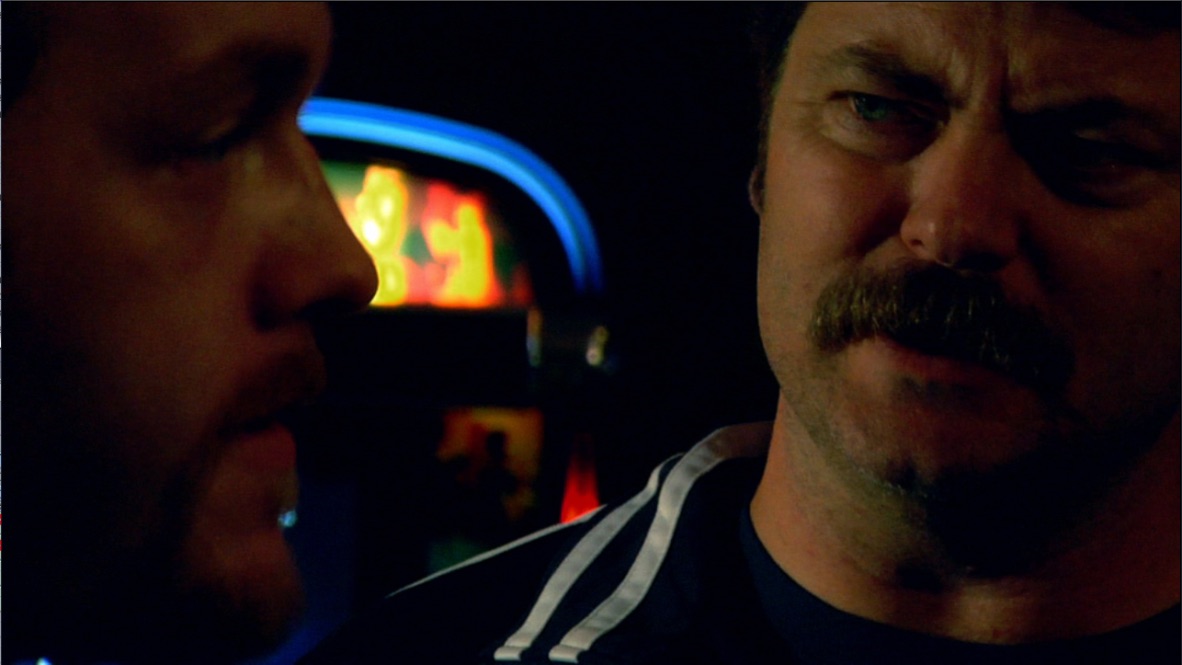
While the “easy ways” leave Ron bursting at the seams with aggressive passivity, they lead more thoughtful characters like Stacy or Scott to inarticulately wonder if there is more to it all beyond what is handed to us. Ross often uses mirrored narratives, similar to many of Mike Leigh’s early films or John Cassavetes’ Faces (1968), to set two opposing states of consciousness against each other. When Stacy is introduced, her way of navigating her day is far different than Ron’s regimented approach. She displays a much more relational form of working while making her deliveries. She communicates with each of her customers, responding to their individual temperaments as she flirts with an older gentlemen and knows to keep quiet around a stern-looking florist. Stacy keeps a sense of awareness about her that doesn’t limit her scope to the task at hand. She can break from her routine to play with dogs and show that her job doesn’t bury her personality.
When Ron meets Stacy, he does brighten up a bit. He becomes more responsive and relatable. They begin to take greater expressive chances in front of each other as they grow better acquainted. Late in the film, Ron spends the night at Stacy’s, and both try to convey certain feelings for each other the next morning. Stacy’s attempts come across rather strained; Ron’s are awkward, even downright strange (“The first time I saw you, you looked like the book a cartoon character is about to grab”). But the film recognizes how often sincerity is painfully awkward. Love is strange. Ross doesn’t look down on his figures for their embarrassing and inarticulate attempts at honest expression. Considering what Ross does a moment later when Stacy reaches for a common ground with Ron through cliched expressions, he is much more encouraging of their genuine fumblings than in reaching for the ease of pre-packaged lingo.
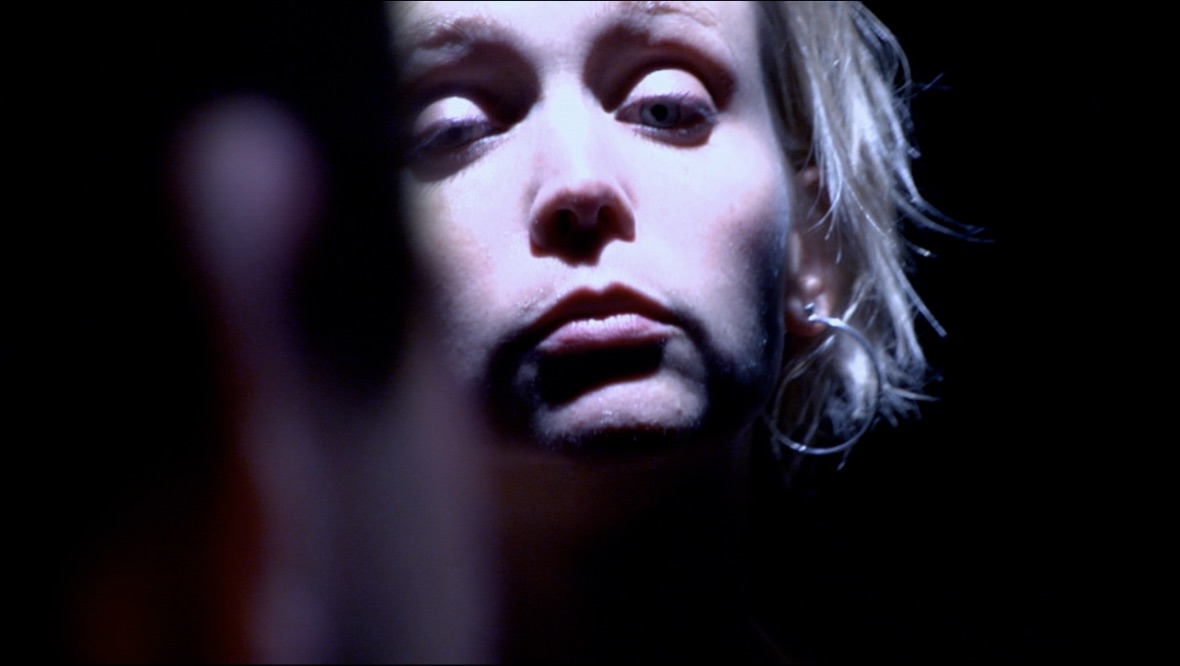
As his working characters go about their routines, Ross only rarely grants us access to moments where they are able to reflect and try to make sense of their experience. We are used to Hollywood epiphany moments where characters focus their understandings into proactive solutions and complete meanings. For Ross’ characters, solutions to their problems do not appear. These reflective moments are more like a slight gaining of traction against the onslaught of work and social pressures that threaten to overwhelm them. For Ron or Stacy to reach definitive understandings of such complex dilemmas would risk trivializing their struggles.
Ron and Stacy are both seen in such moments of reflection toward the end of the film. Stacy catches a sight of one of her neighbors through her window, alone and still, watching television. She tries to express to Ron how it made her feel. She struggles to say anything, but mentions that it looked so “quiet.” Ron is pressured by a drunken Scott to finally “get mad.” When he does open up about his frustrations with life, he goes so far as to vow to quit his job. The next time we see him, he is shaving his beard. Far from a letdown, the film reminds us that real, meaningful change is often so small and incremental.
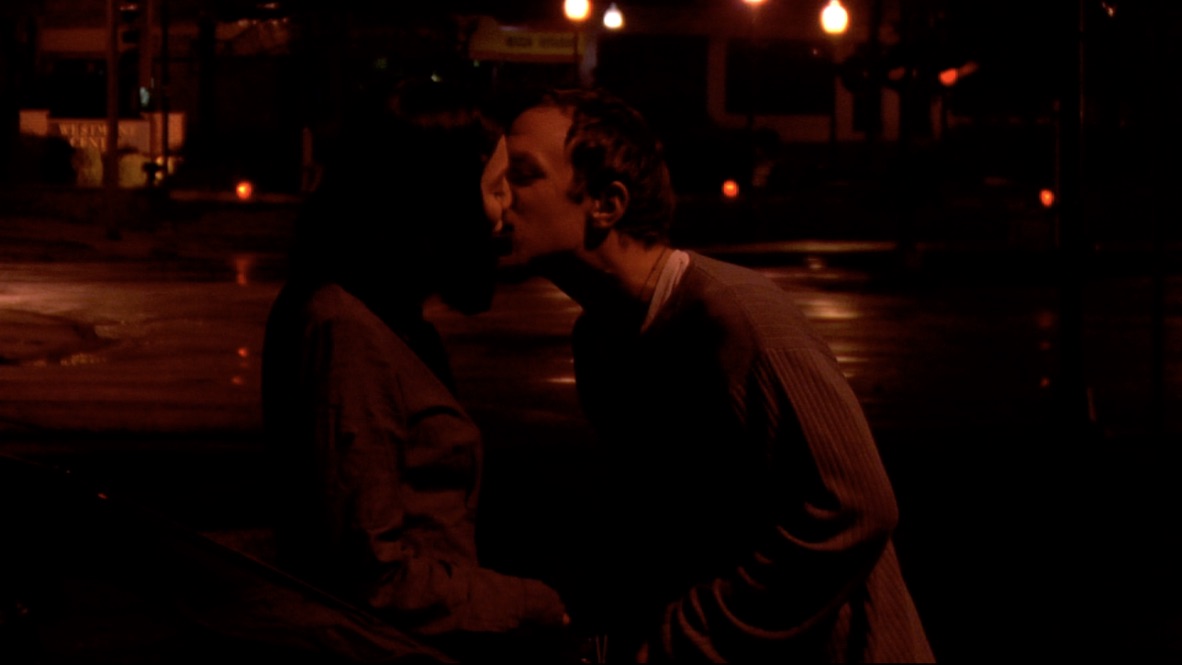
Audrey the Trainwreck presents no fantasy vision of escaping the work week. Ross recognizes that the social and occupational roles most of us perform to earn a living are here to stay. If Ron were to follow through with quitting his job, it wouldn’t solve anything — it would only create more problems, especially if Frank V. Ross is writing the script. (Watch Present Company to see how Ross understands the complications that come with taking progressive action.) The changes that could make a difference in Ron’s life are shown to involve a different and more challenging kind of work than simply finding a new job. Ross’ films explore the potentials and consequences of keeping our senses about us, to avoid confusing the mere “making of a living” with “living” itself. Our jobs can give us an orienting path to follow, a place to focus our energies, but there is a risk of our giving in, and letting the pressures and squabbles of business overtake us. Ross’ film demonstrates the importance of being able to occupy an imaginative distance from the grind, to avoid the tunnel vision that can obscure our perception. This distance comes not by escape — for so often, the way we let our jobs totalize our experience is a form of escape — but through mindful engagement, by keeping a sensitivity to the twists and turns the world throws at us, learning to work with the disruptions that can create trouble when we rest too heavily on our routines. Audrey the Trainwreck ultimately provokes a more active relation to the world around us.
Stream Audrey the Trainwreck here
Follow our series on the Films of Frank V. Ross here:
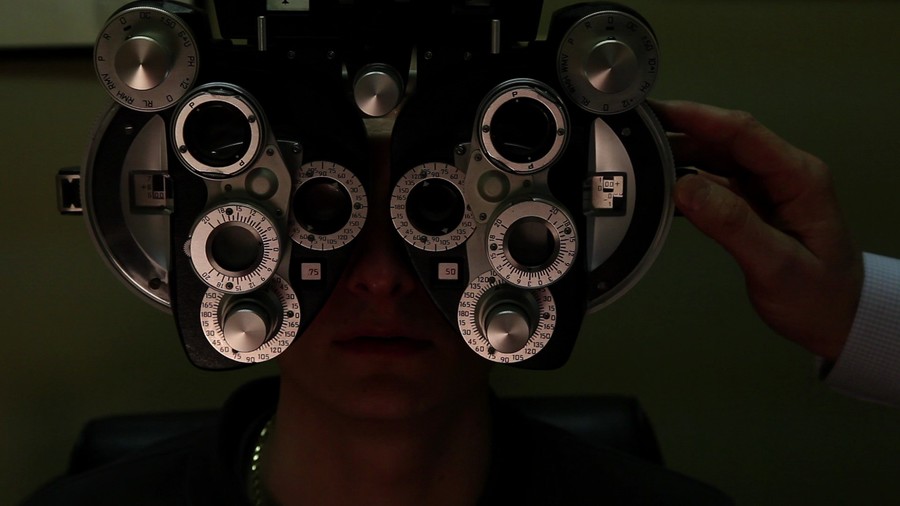
Follow Brett and Split Tooth Media on Twitter
(Split Tooth may earn a commission from purchases made through affiliate links on our site.)

